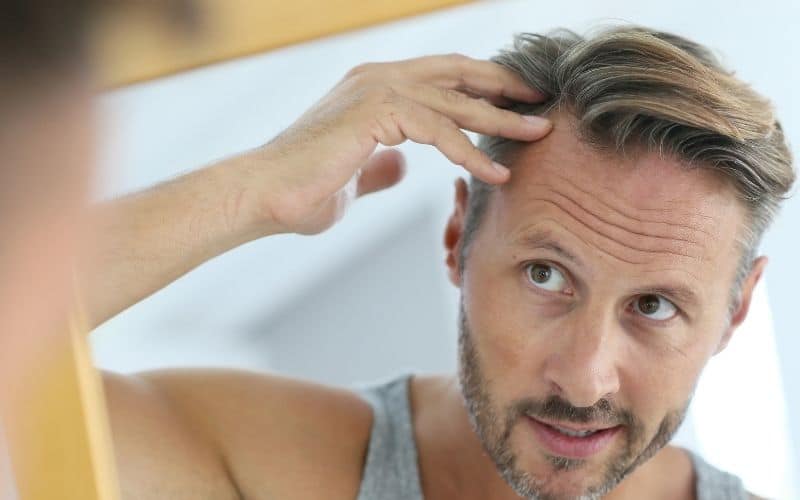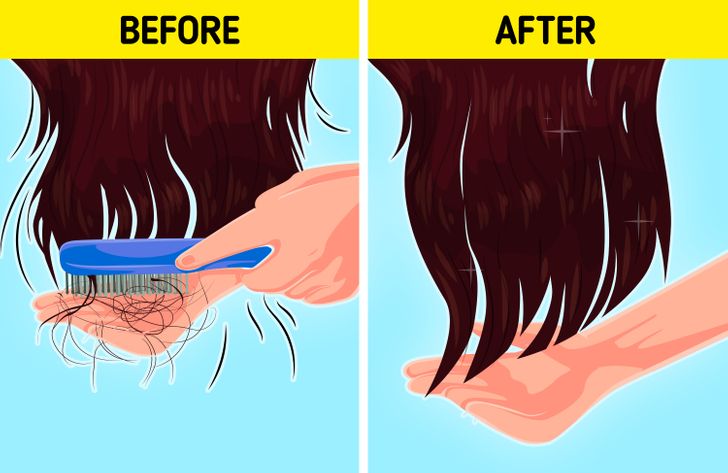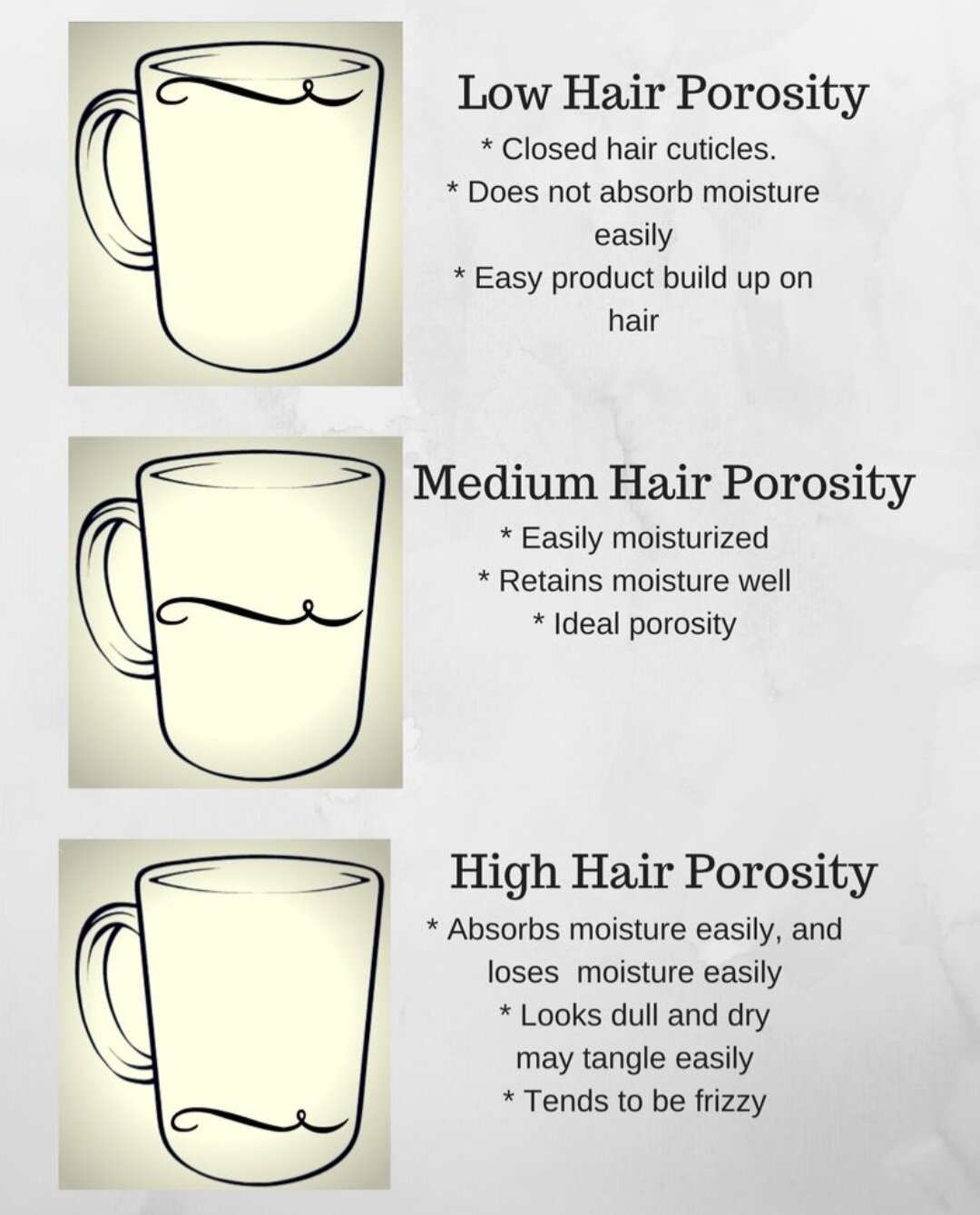Table Of Content

This is true for damaged hair follicles from too-tight hairstyles, damaged hair follicles from chemicals applied to the hair, and damages caused by certain autoimmune diseases. It’s important to keep in mind that hair growth is a complex process and multiple tests may be needed to understand what is causing your hair loss. A biopsy may also be taken if it is initially very unclear what the root causes may be. Hair loss related to androgenic alopecia tends to happen gradually. While some people might experience hair loss as early as puberty, others might not notice symptoms until their middle ages.
Things That Can Cause More Hair Loss
Hair loss occurs when new hair doesn't replace the hair that has fallen out. Dramatic changes in the body can cause temporary hair loss. Giving birth, rapid weight loss, surgery and certain illnesses may cause more hair loss than usual, typically in the resting phase. The authors of a more recent study from 2019 claim that 40% of women experience excessive hair shedding when shampooing their hair.
The role of vitamins and minerals in hair health: Essential nutrients for strong and healthy hair
Of course, it’s normal to regularly find some hairs on the shower floor, but an increased amount on a consistent basis may warrant a call to your doctor. This is a sign where attention to detail is important, because you need to be aware of your baseline before you can determine whether or not you’re losing more hair than normal. Other medications that can increase your chances of hair loss include retinoids and antidepressants.
Alopecia areata
You take this medication daily to slow hair loss, though some experience new hair growth when taking finasteride. Female-pattern baldness typically starts with scalp hairs becoming progressively less dense. Many women first experience hair thinning and hair loss where they part their hair and on the top-central portion of the head. Baldness typically refers to excessive hair loss from your scalp.
Although this can be unsettling to see all at once in the hairbrush, it is normal in small amounts. Chemical dyes, heated curlers and straighteners, and excessive hair brushing can all lead to extra hair shedding or breaks in the hair. Only about 1 to 2 percent of your hairs are in the catagen phase at any given time. During the catagen phase, the hair strand stops growing. This April marks Stress Awareness month in the US, a calendar moment designed to raise awareness of the pervasive and damaging nature of stress.
Do You Lose More Hair in the Shower?
Factors like stress, medication, and underlying medical conditions can all aggravate hair loss. Traction alopecia is the result of environmental factors, such as wearing your hair in tight hairstyles, Agbai says. Telogen effluvium refers to the excessive shedding of hair follicles, and it occurs when hair follicles prematurely skip to the end of the hair growth cycle, she adds. Experts say the average number of hairs shed by men and women per day is about the same. However, women or people with long hair are more likely to notice hair loss, explains Andy Goren, M.D., board-certified dermatologist, trichologist, and chief medical officer of Daniel Alain. Goren says 60% of women who suffer from the most common form of permanent hair loss, androgenic alopecia, exhibit excessive shedding of more than 400 hairs per day when washing their hair.
Do You Lose More Hair in the Summer? - Coveteur
Do You Lose More Hair in the Summer?.
Posted: Wed, 04 Aug 2021 07:00:00 GMT [source]
Avoid harsh products
Here are some clear signs you’re losing too much hair to watch out for. After the telogen phase, the hair follicle re-enters the anagen phase, hence why it's called a cycle. As Dr. Kinler notes, hair loss becomes a bigger concern "when there is an imbalance in the growth cycle, leading to excessive shedding or a failure of new hair to replace the old." It's typical to lose some hair every day as part of your hair’s usual growth cycle. For most people, the lost hair grows back, and you maintain a full head of hair.

Typically, most people notice excessive hair shedding a few months after experiencing the stressful event. For instance, new mothers may observe this shedding approximately two months after giving birth, with the peak occurring around four months postpartum. Telogen is where hair follicles enter into the resting phase and fall out. This is where the "normal-for-you" hair loss comes from each day. Hair loss is frequently due to your sensitivity to circulating androgen. Chemotherapy, certain other drugs and radiation treatments can prompt hair loss, mainly in the growth phase.
What other common types of hair loss are there?
How Extreme Stress Causes Hair Loss - Forbes
How Extreme Stress Causes Hair Loss.
Posted: Tue, 30 Jun 2020 07:00:00 GMT [source]
If you can’t live without these styling tools, use a thermal spray to coat the fibers in the hair to help protect it. Sun can also damage hair so opt for a hat when it’s sunny and you’ll be outdoors. Both the CDC and the FDA warn against treating this common childhood condition on your own with non-prescription treatments. Newer treatments that are also being explored include some forms of laser therapy, microneedling with PRP, as well as other oral medications. Many of these treatments are still in the early testing phases though, and more research will be necessary.
Hormonal imbalances before, during and after menopause can lead to more permanent hair loss, Dr. Simpson says. Anyone who notices that they are losing much more hair than they usually do should see their doctor to help determine the underlying cause. Learn more about traction alopecia, which is hair loss due to tight hairstyles, in this article. In some cases, excessive brushing may lead to other issues in the hair, such as breaks.
The unexpected sight of a brush, pillow, or drain full of hair can be jarring. It may even prompt you to wonder how much hair loss is normal. The good news is that everyone with long enough hair is bound to spot some strands in those common catchall spots, but there is a point when shedding can become abnormal.
Towards the end of the telogen phase, new hair begins to grow in the same follicle, pushing out the old hair. Losing hair each day is completely normal, Dr. Kuhn says, because it's part of the normal hair cycle. Understanding just a bit about routine hair shedding can help you embrace some of those strands showing up in your brush. Some chemical ingredients in shampoos can be harmful and cause breakage or increased hair loss.
Hair pulls tests help determine if the shedding is within the normal range or if there is an underlying hair loss condition. In a non-randomized study involving 14 women over a four-week period, participants were instructed to brush their hair with varying frequencies each week. The amount of hair lost during each week was recorded, and comparisons were made to determine the average hair loss for different brushing frequencies. While the terms "male-pattern hair loss" and "female-pattern hair loss" may sound outdated, they're the best terms to describe what's going on with your scalp.












